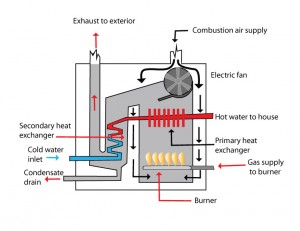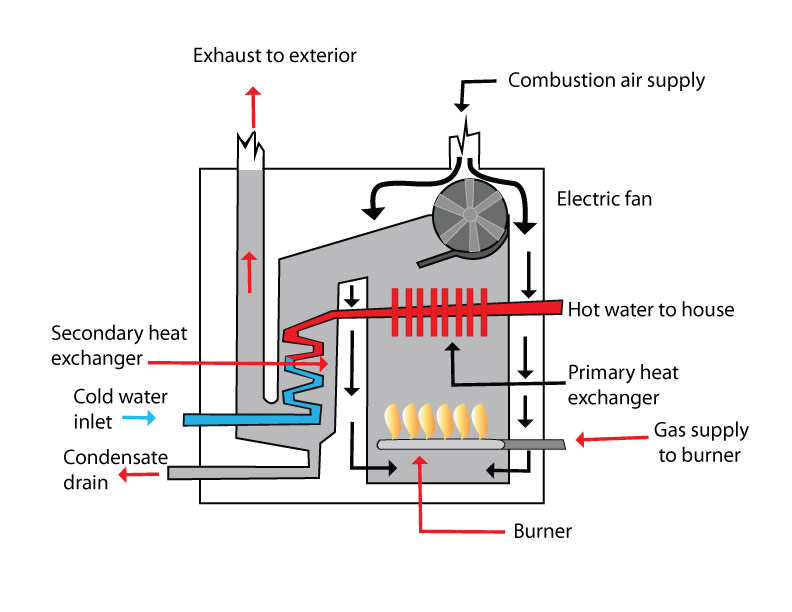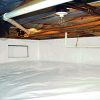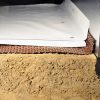There’s something very cool about high-efficiency heating equipment.
Most of us are smart enough not to put our hands directly over a chimney when a fire is burning below it. We know that enough heat goes up the chimney to cause a painful burn. But this rule doesn’t apply with a high-efficiency furnace or boiler.
In fact, this high-tech HVAC equipment is so efficient at extracting heat from fuel that the exhaust gasses can exit your house through common plastic plumbing pipe. There’s no need for a masonry chimney or an insulated, stainless steel flue.
If you’re planning to replace an older furnace or boiler, it’s worth knowing the difference between a standard model and a high-efficiency unit.
Old-fashioned furnaces and boilers are still sold and installed today, but these units have Annual Fuel Use Efficiency (AFUE) ratings that peak in the mid 80% range. High-efficiency models, on the other hand, can be up to 96% efficient. In other words, only 4% of the fuel’s total heating potential is wasted.
Also known as…
Before delving any deeper into high-efficiency HVAC, let’s clear up some terminology issues. When the term “high-efficiency” is used with regard to furnaces or boilers, it usually means that these heating appliances are “condensing, direct-vent” models. Some high-efficiency furnaces and boilers are also referred to as “sealed-combustion” units because they don’t rely on interior air to help fuel the combustion process. (The combustion air is piped in from outside the building.)
Two heat exchangers work better than one

HOW A HIGH-EFFICIENCY BOILER WORKS
This schematic view of a high-efficiency boiler shows how two heat exchangers work together to extract the maximum amount of heat from fuel.
At first glance, a high-efficiency furnace or boiler looks just like a standard model. But take a closer look and you’ll notice that there’s no steel vent hood extending from the top of the sheet metal cabinet to connect with a chimney. Instead, relatively cool exhaust gasses are blown outside through plastic pipe.
Inside a high-efficiency boiler, there are two heat exchangers instead of the single heat exchanger used by standard models (see drawing). Upon entering the boiler, cold water is preheated in the secondary heat exchanger that is warmed by exhaust gasses. (In a standard boiler or furnace, the heat from these exhaust gasses is simply wasted.)
After being preheated in the boiler’s secondary heat exchanger, the water gains its final level of heat by passing through the primary heat exchanger –the one directly exposed to the hot flames above the burner module. High-efficiency furnaces work in much the same way as high-efficiency boilers do, substituting air flow for water flow.
A high-efficiency boiler (or furnace) produces a small amount of water (aka condensate) when operating. This happens because the water vapor created during the combustion process will condense out of the exhaust stream in the secondary heat exchanger. The resulting condensate can be piped or pumped to a drain line.
Cool exhaust gasses mean a warm house
Go ahead –put your hand in front of the plastic exhaust pipe of a high-efficiency boiler. The fact that you can’t feel a high level of heat shows you how much of your fuel’s energy potential is being realized by the HVAC system. A small fan is required to blow exhaust gasses outside, because the exhaust isn’t warm enough to rise naturally by convection.
A high-efficiency furnace or boiler will cost more than a comparably sized standard combustion model. But this extra expense can get cancelled out quickly over the course of a cold winter or two.
After that, you’ll enjoy savings every time the heat comes on.






